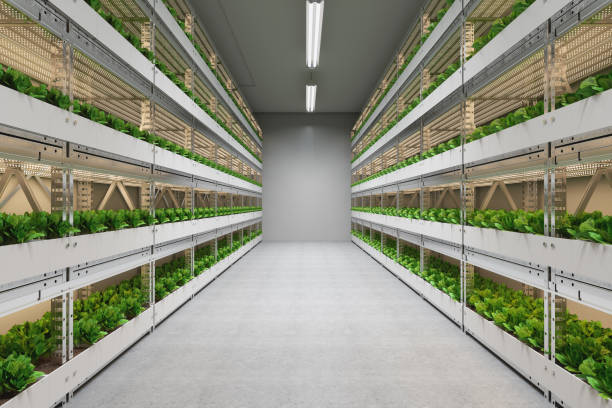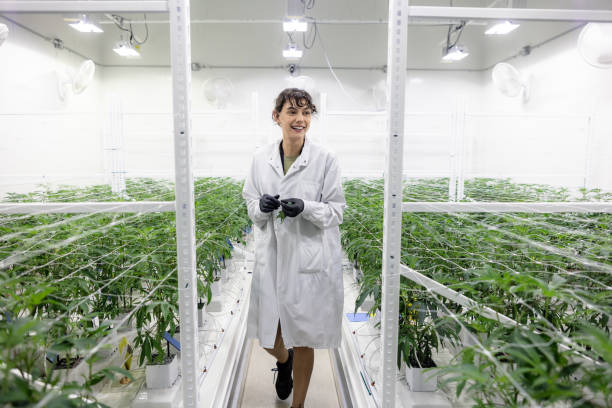Are you passionate about sustainable agriculture, innovation, and providing fresh, locally-grown produce to your community? If so, starting a vertical farming business might be the perfect venture for you. Vertical farming is a cutting-edge agricultural method that allows you to grow crops year-round in a controlled indoor environment. In this step-by-step guide, we’ll walk you through everything you need to know to launch your own successful vertical farming business.
1: Research and Education
Why Vertical Farming?
Before diving into the world of vertical farming, it’s crucial to understand why it’s such a game-changer. Vertical farming offers several benefits, including:

Year-round production:
Unlike traditional farming, vertical farming isn’t limited by seasons or weather conditions.
Space efficiency:
Vertical farms maximize space, making them ideal for urban areas with limited land.

Water conservation:
Vertical farms use significantly less water than traditional farming methods.
Reduced pesticide use:
Controlled environments reduce the need for harmful pesticides.
Now that you’re convinced, let’s move on.
Learn the Basics
Educate yourself about vertical farming techniques, such as hydroponics and aeroponics. These methods eliminate the need for soil, relying on nutrient-rich water solutions or air to grow crops. Attend workshops, read books, and follow online resources to gain expertise.
Step 2: Develop a Business Plan
Identify Your Niche
Determine your target market and the crops you want to grow. Consider factors like market demand, local preferences, and your own interests. Popular choices include herbs, leafy greens, and microgreens.

Market Research
Conduct thorough market research to understand your competition and potential customers. Identify gaps in the market that your vertical farm can fill. This information will be invaluable as you plan your business.
Business Model
Choose a business model that suits your goals. Will you sell directly to consumers, partner with local restaurants, or supply grocery stores? Each model has its pros and cons, so make an informed decision.
Financial Projections
Estimate your startup costs, operational expenses, and potential revenue. Create a detailed financial projection to attract investors and secure funding.

Step 3: Select a Location
Indoor Space
Find a suitable location for your vertical farm. Look for spaces with adequate access to electricity, water, and climate control. Warehouses, basements, or repurposed factories are common choices.

Accessibility
Consider the proximity to your target market. Being close to your customers reduces transportation costs and ensures freshness.
Step 4: Obtain Necessary Permits and Licenses
Vertical farming may require various permits, depending on your location and the scale of your operation. Consult your local government’s agricultural department to ensure you comply with all regulations.
Step 5: Secure Funding
Personal Savings
Use your own savings to kickstart your venture, if possible. This demonstrates your commitment to potential investors.

Grants and Subsidies
Explore grants and subsidies available for sustainable agriculture and small businesses. Many governments offer financial incentives for initiatives like vertical farming.
Investors and Loans
Seek out investors who are passionate about your business idea. Additionally, consider applying for small business loans to cover initial costs.

Step 6: Set Up Your Vertical Farm
Equipment and Technology
Invest in the necessary equipment, including LED grow lights, climate control systems, and hydroponic or aeroponic setups. Quality equipment is crucial for the success of your farm.

Crop Selection
Choose your crops based on your research and market demand. Start with a few varieties and expand as your business grows.
Hiring and Training
If needed, hire employees with knowledge of vertical farming techniques. Provide training to ensure they understand your specific processes.

Step 7: Implement Sustainable Practices
Vertical farming aligns with sustainability goals, but it’s essential to practice what you preach. Implement eco-friendly practices, such as recycling water, reducing energy consumption, and minimizing waste.
Step 8: Marketing and Sales
Branding
Create a compelling brand identity that reflects your commitment to quality and sustainability. A memorable logo and a strong online presence are essential.

Direct Sales
Consider selling directly to consumers through farmers’ markets, online stores, or a subscription-based service.
Partnerships
Collaborate with local restaurants, schools, or grocery stores to expand your market reach.

Step 9: Monitor and Optimize
Constantly monitor your crops, equipment, and processes. Make adjustments as needed to maximize efficiency and yield.
Step 10: Expand Your Business
As your vertical farming business thrives, consider scaling up. You can expand your operation, diversify your crop selection, or replicate your model in other locations.
Starting a vertical farming business is a rewarding journey that contributes to sustainable agriculture and provides fresh produce to your community. With the right research, planning, and dedication, you can turn your passion for farming into a successful and environmentally friendly business. So, roll up your sleeves and get ready to grow – vertically!
In this guide, we’ve covered the essential steps to help you get started on the path to becoming a successful vertical farmer. From researching and planning to securing funding and scaling up, you now have a roadmap to follow. Remember, the key to success in vertical farming, like any other business, is dedication, continuous learning, and a commitment to sustainability.
So, are you ready to embark on your vertical farming adventure? Your journey begins now!












2 replies on “A Step-by-Step Guide On How To Start Your Vertical Farming Business”
[…] Read, Also >>>>>> A Step-by-Step Guide On How To Start Your Vertical Farming Business […]
[…] Read, Also >>>>>> A Step-by-Step Guide On How To Start Your Vertical Farming Business […]